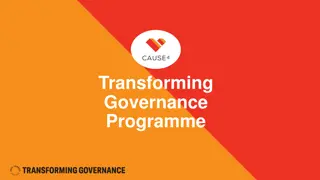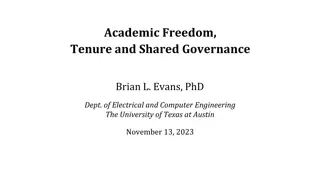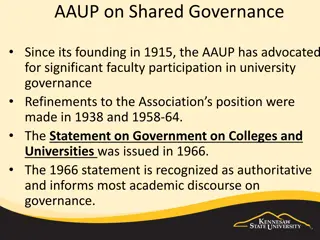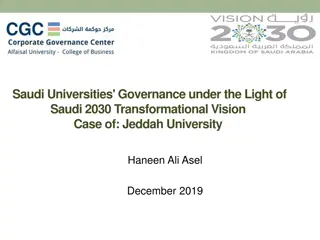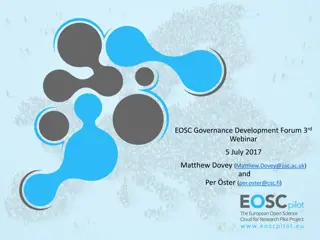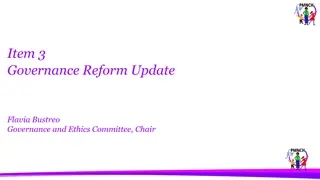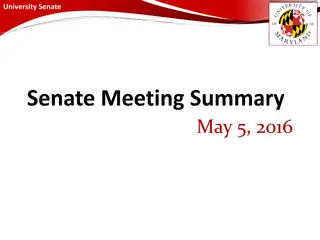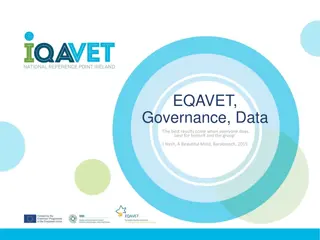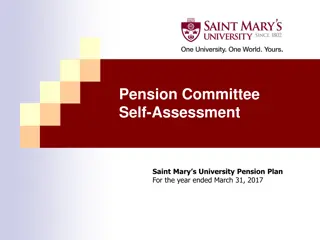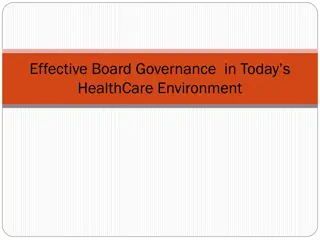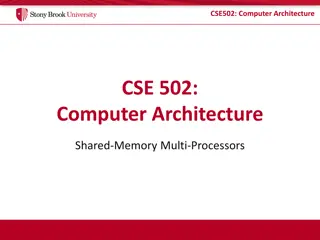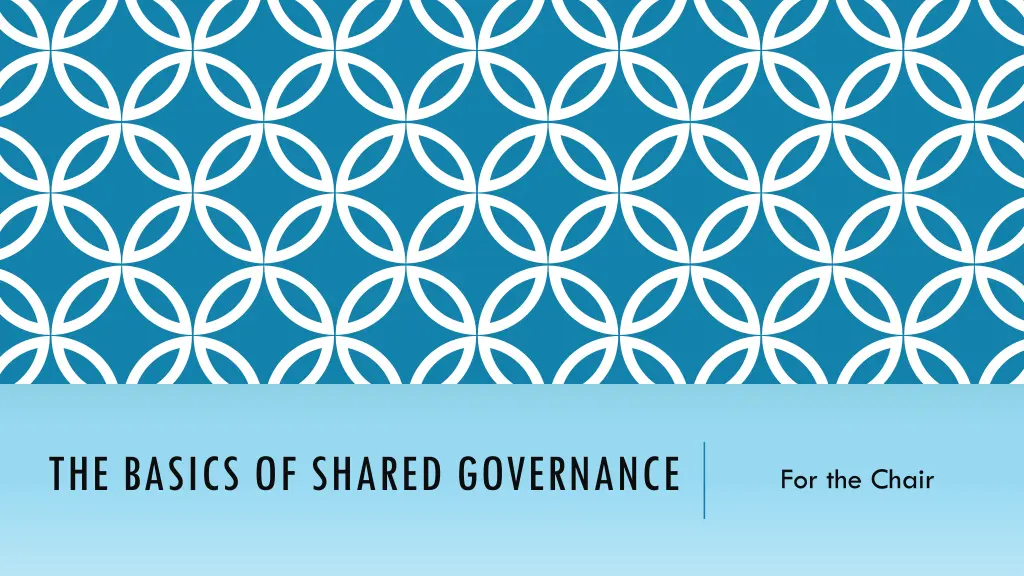
Shared Governance: Chair's Duties, Meeting Times, Agenda Management
Learn about the essential responsibilities of a committee chair, including setting agendas, managing meetings effectively, and upholding order. Understand meeting times, quorum requirements, and the process for calling agenda items to ensure smooth governance practices.
Download Presentation

Please find below an Image/Link to download the presentation.
The content on the website is provided AS IS for your information and personal use only. It may not be sold, licensed, or shared on other websites without obtaining consent from the author. If you encounter any issues during the download, it is possible that the publisher has removed the file from their server.
You are allowed to download the files provided on this website for personal or commercial use, subject to the condition that they are used lawfully. All files are the property of their respective owners.
The content on the website is provided AS IS for your information and personal use only. It may not be sold, licensed, or shared on other websites without obtaining consent from the author.
E N D
Presentation Transcript
THE BASICS OF SHARED GOVERNANCE For the Chair
CHAIRS DUTIES (MODIFIED FROM ROBERT S RULES) Open the session on time Set and follow the agenda Close the loop (hold a vote) on regular motions made during the meeting Ignore motions that are obviously frivolous or not related to committee business Manage meeting time wisely Speak up when debate leads to high spirits to restore order to the meeting Keep committee members from speaking over other members or presenters Help fellow committee members understand the order of the meeting Review minutes to ensure accuracy
CHAIRS DUTIES (FROM ROBERT S RULES) Call the meeting to order on time To recognize members entitled to the floor To state and to put to vote all questions which are regularly moved and to announce the result of the vote To protect the assembly from annoyance from evidently frivolous motions by refusing to recognize them To assist in the expediting of business in every way compatible with the rights of the members To restrain the members when engaged in debate within the rules of order To enforce on all occasions the observance of order and decorum among the members To inform the assembly on a point of order or practice pertinent to pending business To authenticate all the acts, orders, and proceedings of the assembly declaring its will and in all things obeying its commands
MEETING TIMES Committees will meet at the established time unless a committee has no agenda items or a quorum of the committee members cannot be present. If a committee has work groups, it will have agenda items because work groups are required to report their activities every month. According to Robert s Rules, a quorum of a deliberative assembly is a majority of all members and not only those who have voting powers. Ex Officio/non-voting members are included in a quorum. Meeting times should not be changed by committees. They are established in the Shared Governance Document.
CALLING FOR AGENDA ITEMS The Chair of a committee will announce a call for agenda items for the next meeting up to the point when agendas are made public (three to five days before a meeting). It is recommended that constituents have a week or more after the call in which to submit agenda items. The Chair may ask the secretary to perform this function. An early call for agenda items allows constituents time to develop and submit proposals to the chair (or secretary who will forward to the chair) before the agenda is made public. Making an agenda public three to five days prior to the meeting should encourage constituent attendance at meetings if an agenda item is of interest.
A TYPICAL TYPE OF AGENDA WHERE TO ADD ITEMS Date of Meeting: 1. Standing items - items that are always on the agenda of a regular meeting - Take attendance: note officers, voting and non-voting members, and speaking guests - Approve prior meeting s minutes (May do electronically before meeting) - Work Group updates 2. Unfinished Business from previous meeting (commonly old business ) - Discuss topics that were not completed in a previous meeting or action items that are due 3. New Business - New topics for this week s meeting - Proposals from individuals or groups 4. Housekeeping - standing items at the conclusion of the meeting - Announcements - Review of action items (What did you do in this meeting? Not discussion) - Date of the next meeting 5. Meeting Adjourned
WHO SPEAKS IN MEETINGS? The Chair decides who speaks at meetings and when. In the interest of stated shared governance principles (Appendix B), speakers making proposals should be allowed to finish their proposals before others speak. Robert s Rules (pg.3) states that discussion does not occur until a motion has been made and seconded. Speakers are then allowed to speak when recognized by the chair.
PROPOSALS & NOTIFICATIONS A proposal is made to change a policy in an institutional document. Examples of institution documents are the catalog, the faculty and staff handbooks, student handbook, etc. A notification is made when an office procedure or practice is changed. One example is if a printed form is changed to electronic document. For notifications, no motion is necessary and no vote is to be taken.
WHAT HAPPENS WITH PROPOSALS SHARED GOVERNANCE PROPOSALS After a shared governance proposal has been discussed, Chairs may call for a vote. An approved shared governance proposal is then presented to SGOC to be reviewed by the Faculty and Staff senates. Proposals are not sent to other committees for approval but may be sent for notification purposes. A disapproved proposal is recorded. The entity submitting the proposal may not submit the same proposal to another committee during that academic year. A proposal may be tabled to be taken up at the next meeting.
WHAT HAPPENS WITH PROPOSALS - WORK GROUP PROPOSALS After a Work Group proposal has been discussed, Chairs may call for a vote. An approved work group will have its membership and purpose announced. A disapproval means no work group will be formed. The proposal for a work group may be tabled to be taken up at the next meeting.
WHAT HAPPENS WITH A PROPOSAL THAT THE SENATES AMEND When either the Faculty or Staff Senate or both make amendments to a shared governance proposal, the committee approves or disapproves the proposal with the amendments as if it were a new proposal. If the committee approves the amended shared governance proposal, it is given to SGOC for submission to the Chancellor. A proposal amended by the senates cannot be further amended by the committee or again by the senates. This could create a vicious cycle of amendment. When a work group proposal is approved, the membership of the work group is passed along to the SGOC for recording and reviewing if the suggested membership falls within Shared Governance Document guidelines. Besides monitoring appropriate membership, SGOC should also make sure that no other work group has been formed that is working on the same type of activity.

